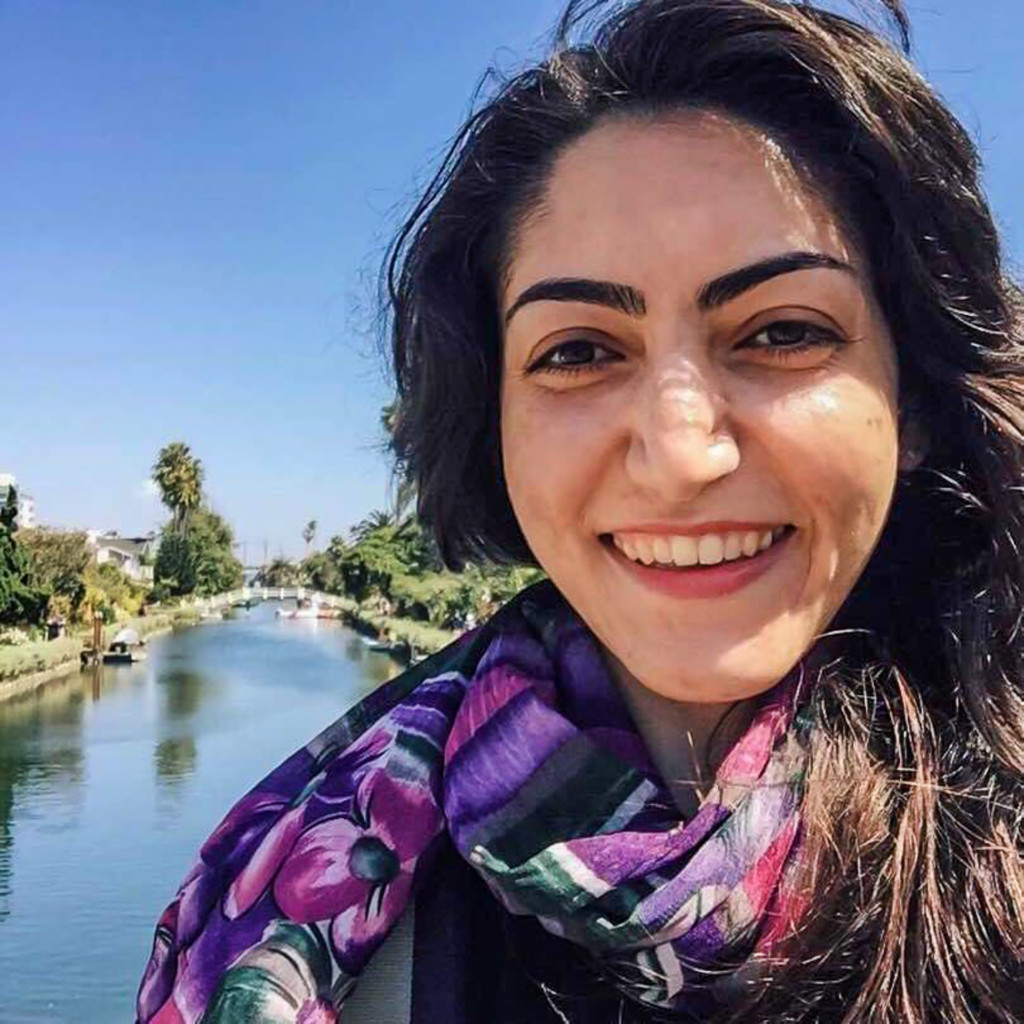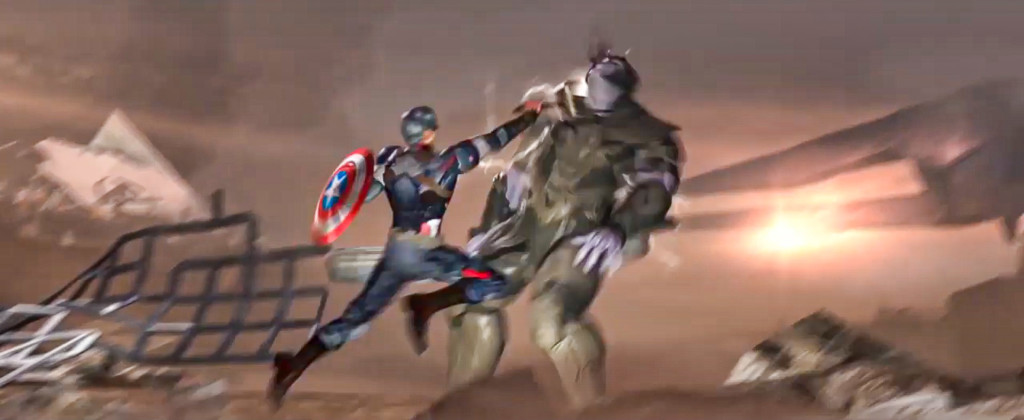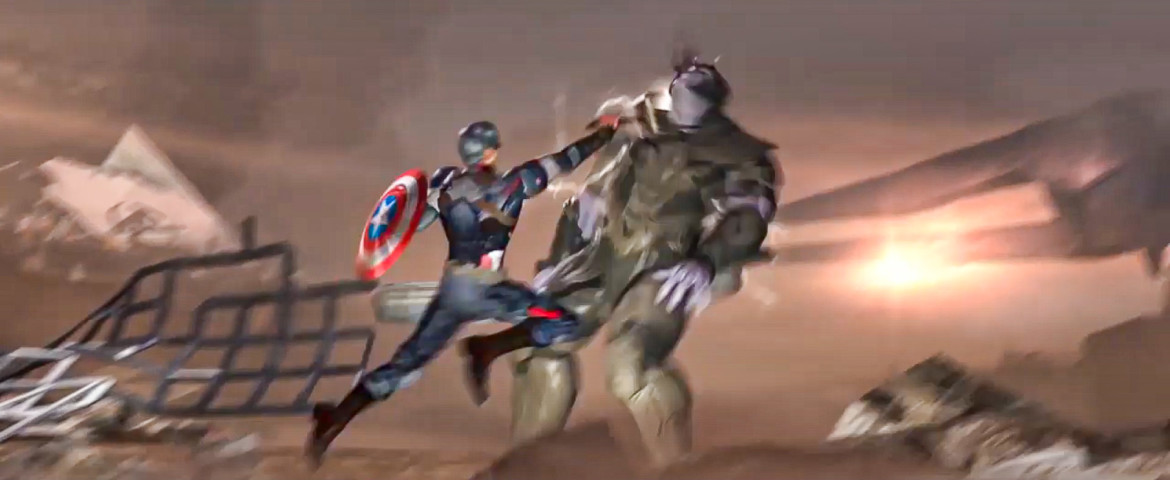By Greta Chiocchetti
Students from all over the world are drawn to the Academy of Art University’s School of Animation & Visual Effects (ANM) for the opportunity to sharpen their skills in a professional studio production environment. With classes focused on developing vital skills taught by well-connected industry professionals, aspiring artists can break into the highly-competitive industry with confidence.
M.F.A. graduate Elham Sepehrjou (2017) is one of those students. Although leaving her family on the other side of the world to pursue her dreams was a bittersweet choice, the 3-D animator and visualization artist says she would have never had the opportunities to work on blockbuster titles like “Avengers: Endgame,” “Spider-Man: Far From Home,” or “Men in Black: International” if she hadn’t broken out of her comfort zone.

“It was like it wasn’t even a choice, really,” recounted Sepehrjou of her move from her home country of Iran to the U.S. “I thought, ‘If I want to do this, I have to do it now and I have to do it here.’”
For Sepehrjou, the risk was worth it. After landing an apprenticeship at The Third Floor, Inc., she went on to work as a visualization artist for the Los Angeles-based studio and others including Halon Entertainment, Day for Nite, and the Moving Picture Company.
Art U News caught up with Sepehrjou about her transformational time at the Academy and her journey into the animation industry.
Have you always known you wanted to pursue animation?
As a kid, I really liked drawing, and painting, and all that stuff. But I actually studied mathematics in college—I got a B.S. in applied mathematics. I always loved animation, but I thought animation was just for fun, as a hobby. In 2013, I was pursuing my master’s in computer engineering, but still producing animation films on my own just for fun. I sent some of my films to some festivals—and I ended up a finalist in Three Rivers Film Festival in Pittsburgh for my short comedy film, “Left,” which was about a pair of shoes. They invited me to watch my short animation with everyone. So that brought me to the U.S.
It was an amazing opportunity that changed my life. Coming from the other side of the world to watch my short animation on the big screen with everyone from another country, and seeing them laugh along to something I made in my hometown so far away… It was incredible that they could relate to it and understand it.
What made you decide to stay in the U.S. and study at Academy?
Back in Iran, I had a job at a magazine, and I used to interview some animators from different parts of the world. One of those was Carlo Vogele, who was at Pixar at the time. He ended up inviting me to come and visit the studio. So after the film festival, I met him at Pixar and had the chance to see the studios and him and get some advice. He told me about the Academy of Art University, and how it was a very good school with “Pixar classes,” and that I could learn a lot from those teachers. I was drawn in—I applied and got into the Academy, applied for my visa, and that was it.

“Avengers: Endgame” visualization image produced by The Third Floor, Inc. Image courtesy of The Third Floor, Inc. 
“Avengers: Endgame” final image. Image courtesy of The Third Floor, Inc.
What was it like to leave your family on the other side of the world?
That was really hard for me because I come from a very traditional family—we all lived together.
But at the time, I didn’t know that I’d be leaving my family for years. I just said goodbye for maybe a month and then I planned to come back, but then everything happened and I decided to stay—it was so unexpected. I think it was easier that way though because I was already here. Maybe I wouldn’t have done it otherwise.
But I knew that if I wanted to pursue animation, I had to be in the U.S. All of the big companies are here. If I went back to Iran, I wouldn’t be able to do what I am doing here. At the time, there was not a school for M.F.A. in 3-D animation and visual efects in my country. And the studios back home aren’t as big or renowned. It was like it wasn’t even a choice, really. I thought, “If I want to do this, I have to do it now and I have to do it here.”
What were the most valuable parts of your Academy education?
I learned so much. I learned a lot from the instructors, obviously, but also industry connections, and I made some good friends. I even learned a lot about life. As a person who was new to the United States , it was the best way for learning about American culture. Moreover, coming to this diverse school with students from the whole world was an amazing experience to learn from many nations. It was a lot of growing as a person.
Another thing I absolutely loved about our school was that I had the chance to make a class and add it to the curriculum. And that was one of the things that maybe not every school does for its students. I requested a polish class from the department, and our instructors from the Feature Animation Training team accepted and taught it. They showed us how to smooth out our animation, to make it look more professional like the ones you see coming out of Pixar. It ended up being so helpful.

What was your first job out of school?
A few months before I was going to graduate, I started applying everywhere—I mean everywhere. I got a call back from Third Floor, Inc., and they wanted to interview me. I ended up getting an offer for a visualization apprenticeship, but I wasn’t sure if I should take it since visualization involves a lot—lots of character animation, plus camera animation, visual effects (like explosions, destructions and magic stuff), lighting, particle systems, everything. So I moved to L.A. in January of 2018 to start that apprenticeship, and it turned out to be such a great experience for me. I learned how to do everything.
You have some really impressive credits under your belt—tell me about some of your favorite projects.
As you know, I worked on “Avengers: Endgame,” “Men in Black: International,” and “Spider-Man: Far From Home.” Each of them [was] really unique for me; for example, for “Men in Black,” I had a really good supervisor named Todd Constantine who taught me so many things about visualization. For “Avengers: Endgame,” we had a really big team, and all of them were these super-talented artists who I would see their work and go, “Oh my god, how did you do that?” That was amazing too. I could learn a lot from each of those artists, especially because it was a project where we all worked closely together, and I could literally see how fast I should be animating. It was my first time seeing really tight deadlines. Deadlines are always important on any project, but with “Avengers,” it was like another level.
Working on “Spider-Man: Far From Home” was like a dream. It was unbelievable. Spider-Man has always been my most favorite Marvel character. It was so exciting to work on a movie that you grew up with. Also, I learned a lot about post visualization in that project.
How did the Academy prepare you for the “real world”?
The best thing about our school, especially the teachers, is that they always give great notes. You always fix your shot the next week and show them again, and you will get more notes. It never ends. The thing is, it will improve you and improve your work.
Part of growing up is learning how to accept the tons of notes you get every day and learning how to use them to get better. And you have to be prepared to make the changes quickly. So that was great practice while I was at the Academy.
